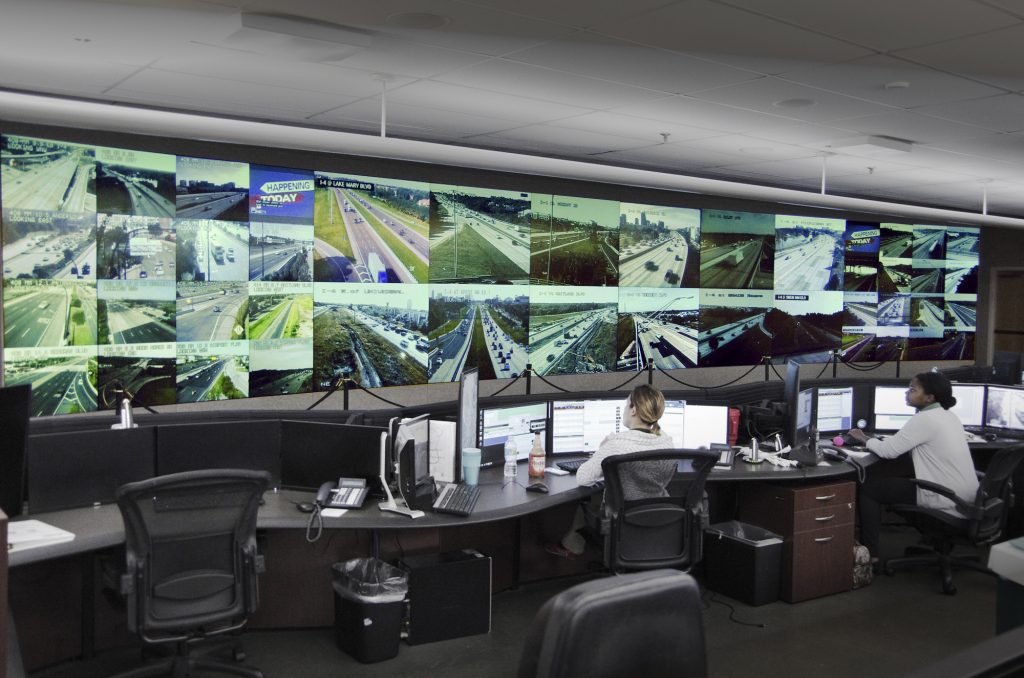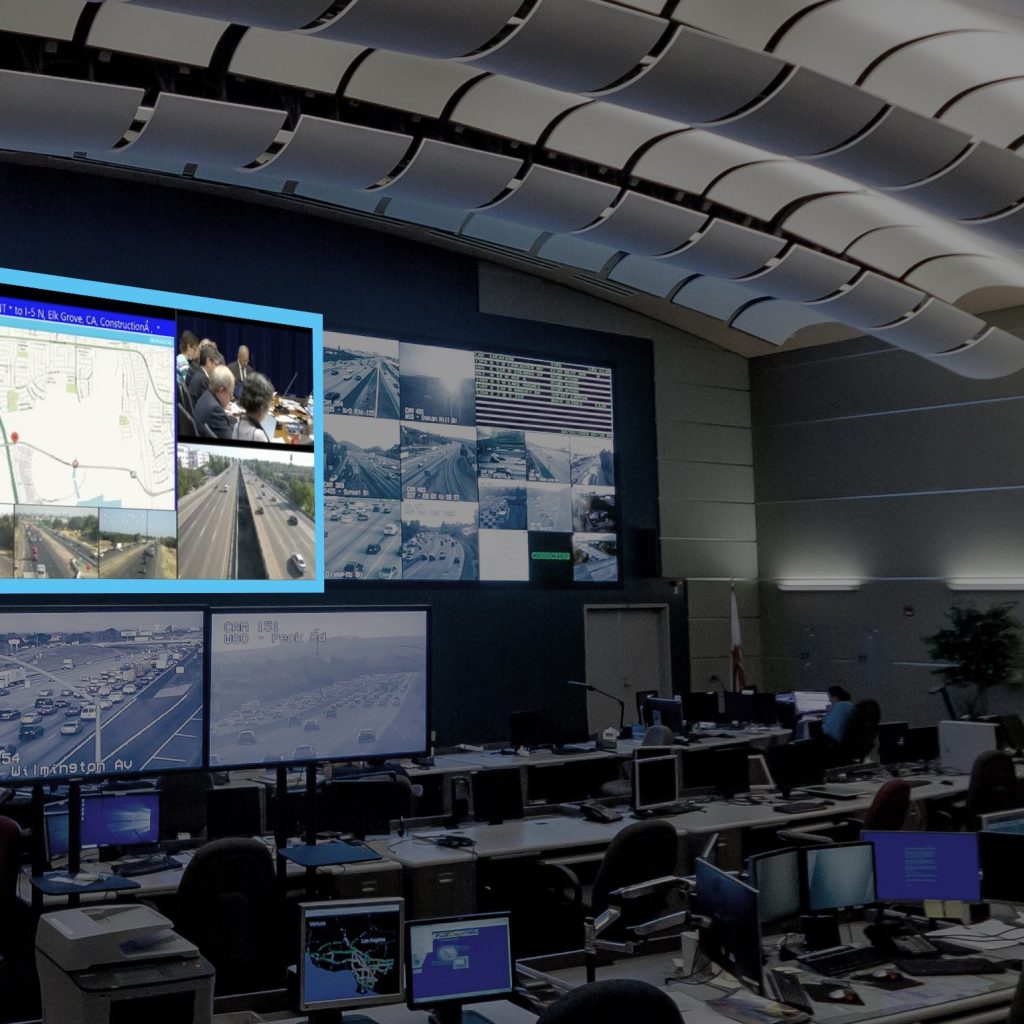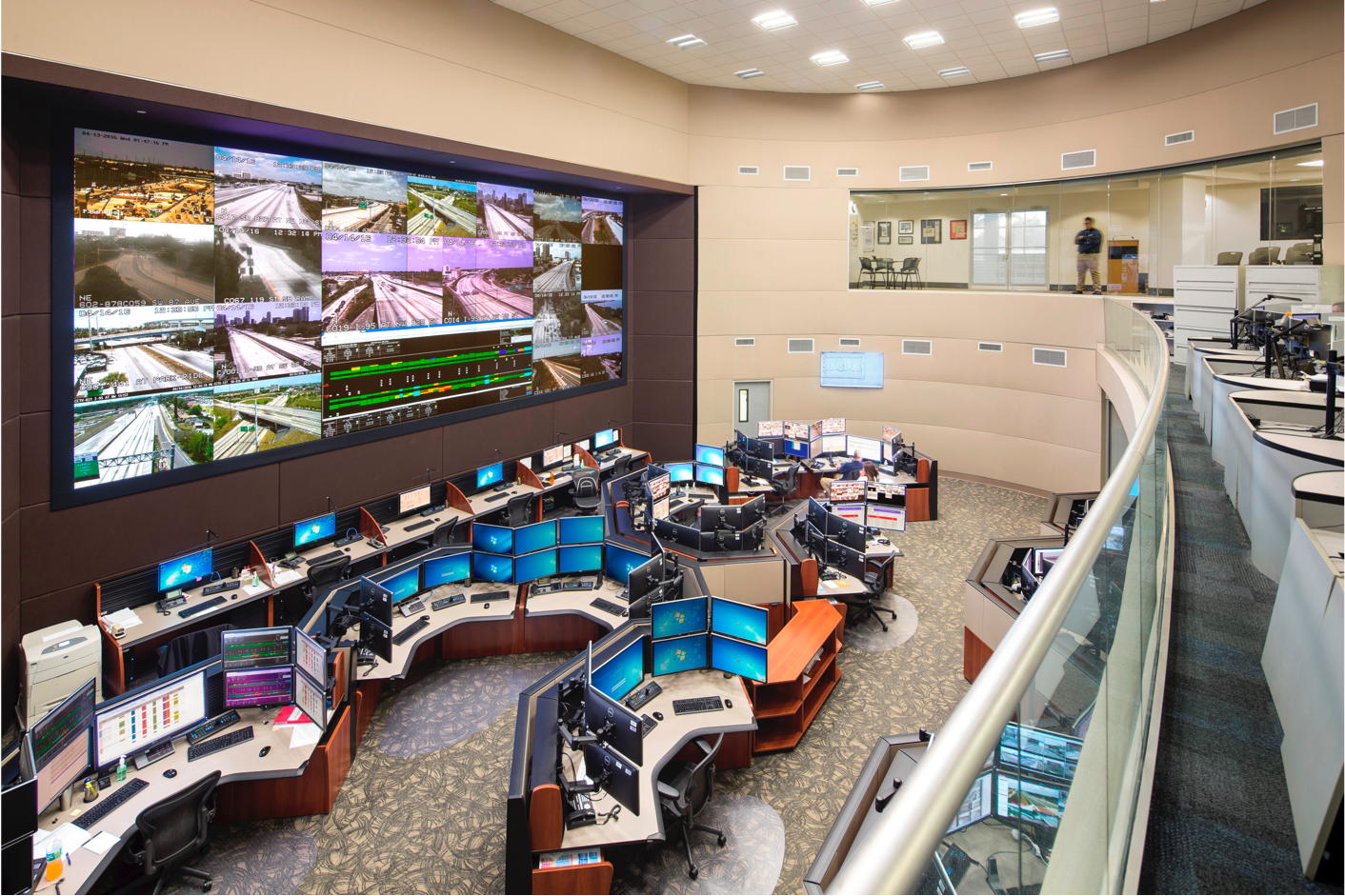The United States boasts an extensive transportation network, 3.9 million miles of roadway, 360 ports, 3,300 public airports and 140,000 miles of railroad tracks.1,2,3 Behind the scenes in Departments of Transportation and Traffic Management Centers, traffic managers play a crucial role ensuring a safe and speedy journey for hundreds of millions of people on rural and urban roads and interstate highways. While day-to-day tasks like monitoring thousands of traffic cameras and conveying vital information to first responders were once handled manually, digital technologies are now driving significant improvements in traffic management, ensuring safety and efficiency for everyone involved.
Here are some key impacts of the digital transformation on traffic management control rooms:
A Cohesive Picture in Mixed Camera Networks

Departments of Transportation (DOTs) and Traffic Management Centers (TMCs) often grapple with expansive camera systems, spread across various road jurisdictions, generations of technology, and brands. Now with the help of software platforms, like Activu visability, teams seamlessly connect, manage, and view diverse camera networks as if they had been integrated from the start. Whether hardwired or managed through the latest Video Management System (VMS) software, visability enables adaptive, real-time road visibility and collaboration of these streaming assets individually or collectively.
Automated Incident Detection

EMS units, on average, take 7 minutes (14 for rural areas) from a 911 call to on-scene arrival.4 Swift response times are directly linked to improved outcomes for trauma patients.4 Each minute of traffic delay on a typical U.S. highway equates to 1 mile of backup. By integrating crowd-sourced tools, like Waze, into control room and video wall content, control room operators are empowered to react rapidly to developing incidents when their effects may be better mitigated. By leveraging these tools, response times are reduced, incidents are cleared faster, and impacts are minimized.
Additionally, Next-Gen collaboration platforms, like visability, can drive proactive alerts and content instantly to relevant teams, the moment traffic incidents and damaged or dangerous infrastructure conditions are detected. These alerts, combined with instant situational awareness, help prevent incidents before they develop.
 for Traffic Management
for Traffic Management
Collaboration Hub for Smart Cities and Beyond

Next-Gen Traffic Management Centers can now collaborate seamlessly amongst each other, with Emergency Operations Centers (EOCs), law enforcement, and others. The Activu visability platform enables flexible, real-time sharing of the common operating picture during incidents or impactful events, promoting quick and secure collaboration with external teams, wherever they are.
Conclusion
Globally, transportation & transit entities are adopting cloud-based platforms to expedite incident recognition & resolution, enhance access, streamline processes, and reduce IT complexity. Activu’s cutting-edge software platform, visability, stands out as the only platform of its kind, offering a virtual command center and video wall functionality, for more efficient collaboration, faster response times, and quicker incident resolution—whether in the control room, mobile, or remote.
- Our Nation’s Highways, 2000, The Federal Highway Administration (FHWA) ↩︎
- America’s Air, Sea, and Land Ports Require Investment to be Globally Competitive, March 2, 2023, by Jerry Haar, Wilson Center ↩︎
- Freight Rail Facts & Figures, October 2023, Association of American Railroads ↩︎
- Emergency Medical Services Response Times in Rural, Suburban, and Urban Areas, October 2017, National Library of Medicine ↩︎
- Emergency Medical Services Response Times in Rural, Suburban, and Urban Areas, October 2017, National Library of Medicine ↩︎

